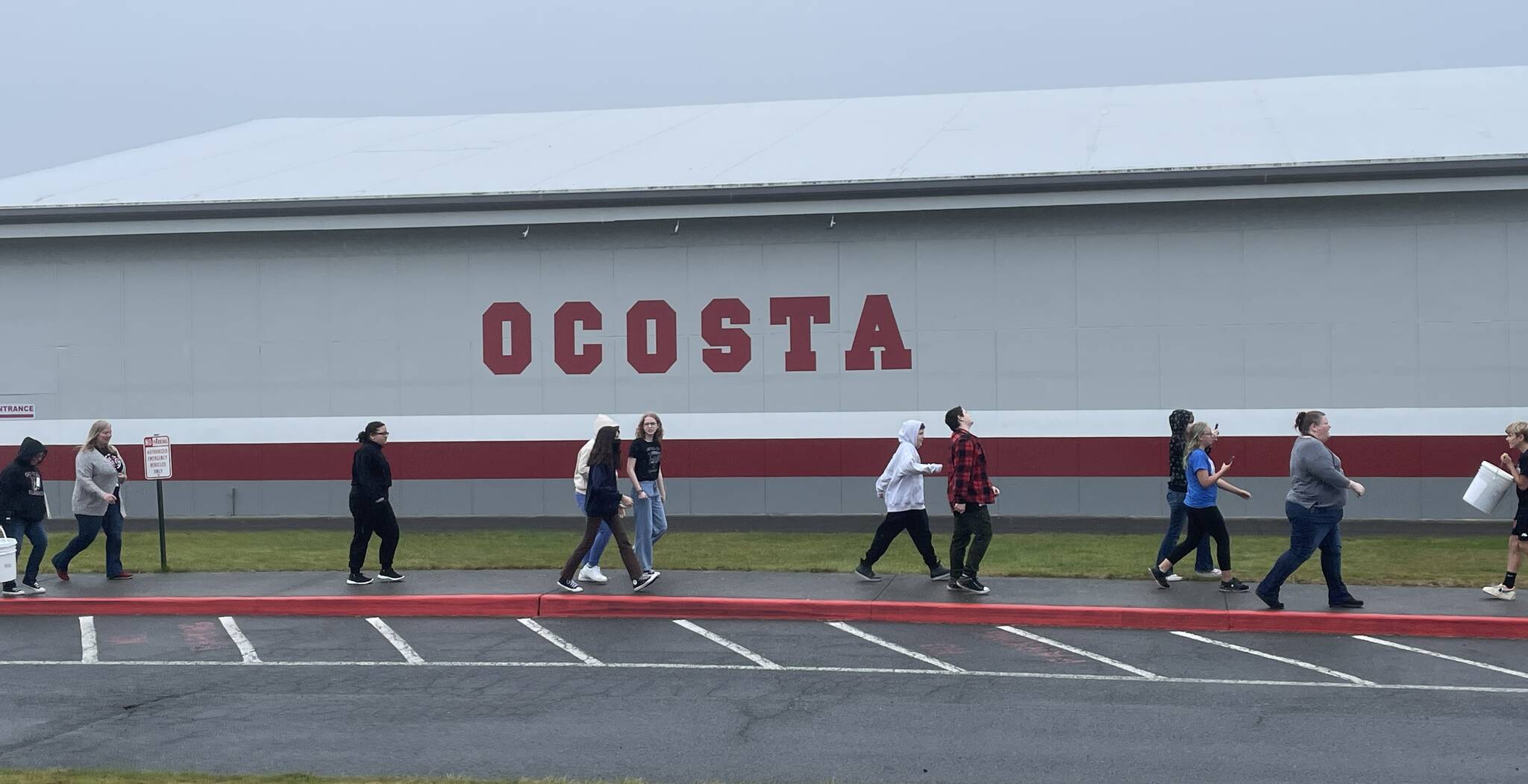Crossing the bridge on Highway 105 over the oyster beds, Westport’s low spit of land is barely even a suggestion in the mist and fog.
The smell of salt is heavy in the air, reminding us that the sea is always close, and on this Thursday morning, students in Westport practice what to do if the sea suddenly gets a lot closer — in the form of a tsunami.
“We don’t know when it will happen,” said Professor Dan Abramson, a member of the University of Washington’s Department of Urban Design and Planning. “We know it will happen.”
Abramson and his department have been deeply involved with Westport’s efforts to harden itself against future tsunamis and other coastal threats, such as a rising sea level.
“It’s very uncertain knowledge — it’s a rapidly developing science,” Abramson said. “But this community has taken action rather than be paralyzed.”
UW, the Washington Department of Emergency Management, the National Atmospheric and Ocean Administration and Washington Sea Grant are all heavily involved in efforts along the coasts to help communities prepare for major tsunami events.
The last major earthquake to strike the Washington coast was in 1700, which caused devastating damage to the Indigenous communities and ecosystem of the region, according to NOAA. An earthquake of this magnitude is a 300-500 year event, Abramson said— putting the coast within the window for a new one.
Building resiliency
Making a more resilient community takes all sorts of forms. One of those was the partnership between the Ocosta School District and UW to help start and support the school’s drone club.
“The students love the drone club!” said Andrea Mirante, the director of afterschool programs. “They love flying the drones and they enjoy being a part of the community outreach we are doing with the club and the University of Washington. These students are being exposed to experiences that they would otherwise never even know about, and a part of adventures that they wouldn’t be able to participate in.”
The school district’s interest in the club reflects the community’s interest in preparing for the future, Abramson said, as students engage with Westport from flying drones over it to modeling it in video games.
“The students have been really game to engage these topics in a variety of ways,” Abramson said. “They’ve participated in their own video. They’ve played Minecraft and participated in design.”
One of the projects was a “tsunami-eye view” video, flying a drone at the project crest level of a tsunami ripping through Westport. Students from UW supervise the students in the club, many of whom are too young to get the Federal Aviation Administration license to fly the drones independently.
“It helps the kids to learn to use the drone,” said Jackson Holtz, a public information officer with UW. “It helps them understand the risk of a tsunami.”
The drone club has a number of objectives for its students, with direct application in the community, such as learning how to use the drones for search and rescue operations, infrastructure monitoring, and landscape modeling, all of which build real-world skills for students to use in the future, Mirante said.
“The students who are in the drone club definitely see the interchangeable skills they are learning as tools for their future,” Mirante said. “Partnering with the UW and other agencies like Emergency Management of Washington has opened their eyes to possible career paths or potential college programs.”
UW graduate student Laura St. Jarre and doctoral student Ziyang Liu will be helping students to work on more advanced modeling of the Westport area as the city looks towards a future dominated by sea level rise, Abramson said.
Great ShakeOut
On Thursday, the drone club filmed the rest of the school as they took part in the statewide tsunami drill at 10:20 a.m.
Driven forward by the sirens, students formed lines and climbed the flights of stairs for the vertical evacuation tower built into Ocosta Elementary School. Students walked across the parking lot from the junior/senior high school to the tower as teachers maintained order, easily climbing to the top in a matter of minutes.
The tower was built to be overengineered for the likeliest major tsunamis, Abramson said. Built in 2016, the tower was the first of its kind in the nation, The Daily World previously reported.
Students at the junior/senior high school attended a presentation about emergency preparation and management with personnel from the state and other agencies.
Contact reporter Michael S. Lockett at 757-621-1197 or mlockett@thedailyworld.com.



